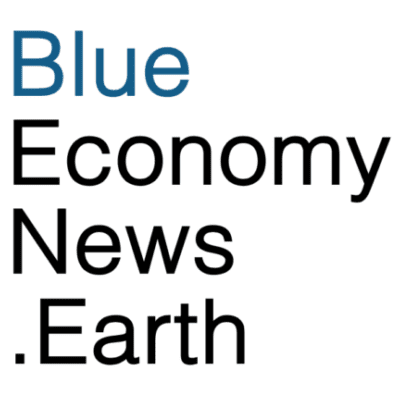The U.S. Department of Energy’s (DOE’s) Water Power Technologies Office (WPTO) announced more than $33 million in projects that will help developers of marine energy technologies–those that capture energy from waves, tides, river and ocean currents, and temperature differences in water–to bring their technologies to the market.
Research shows that clean, renewable marine energy has the potential to displace a significant amount of fossil-fueled energy. The total available marine energy resource in the United States is equivalent to approximately 57% of all U.S. power generation. Estimates show wave energy alone could generate a theoretical 30,000 TwH per year of power globally. Rivers and oceans generate power that is more predictable and reliable than solar and wind power. So it is well-suited to help balance electricity grids with these other renewables. Even if only a small portion of the technical resource potential is captured, marine energy technologies would make significant contributions to U.S. energy needs, WPTO said.
But the world has not been able to incorporate the power of marine energy into grids because designing a technology that can work for decades in a variety of harsh ocean environments is extremely challenging. The projects supported by the WPTO aim to solve some of the stickier problems to make it easier for ocean energy developers to reach commercial viability more quickly.
New Marine Energy Projects at the National Laboratories
Some of the biggest challenges include modeling performance in varying ocean climates. While all coastal areas have waves and tides, they can vary greatly, not only from location to location, but from one season to another. Developers need ways to model their devices’ performance to refine the designs before they test them in the ocean.
Current WEC simulation and evaluation software has limited modeling capabilities, WPTO said. Some of the projects done at NREL, PNNL, and Sandia National Laboratories (Sandia) will include software and hardware that can model specific wave climates and the performance of devices. NREL will develop an open-source WEC numerical modeling framework, known as SEA-Stack, that will integrate low-, mid-, and high-fidelity simulation tools together to more quickly and accurately analyze WEC models.
NREL and Sandia are collaborating to develop and verify open-source CEC modeling tools aimed at enhancing the representation of marine environments. This initiative is designed to more accurately simulate the performance of devices that have been deployed in the water.
In addition, Sandia will design and construct an advanced testing facility to validate the performance of mooring lines that secure some marine energy devices, as well as the umbilical cables that relay information from these devices during deployments. Currently, there are few facilities worldwide equipped to test these essential components. This project will play a crucial role in taking the risk out of putting the technology in the water as well as make it easier to improve designs and lower the costs for marine energy devices. PNNL will collaborate with Sandia to showcase how mooring lines integrated with smart sensors can be utilized in a predictive online monitoring system to identify damage to mooring lines.
The project will also develop models for electrochemical marine carbon dioxide removal (mCDR) powered by marine energy. NREL will work with PNNL to create tools that include models that power mCDR with wave, tidal, wind, and solar energy. These tools will help to advance the feasibility of large-scale mCDR while opening a new market for marine energy.
NREL will develop an enhanced resiliency system (ERS) using marine energy converters to serve remote and underserved communities. These efforts will include local water treatment, ammonia production, and oxygen for generating new products for the blue economy. The ERS will also provide a long-duration energy storage solution for variable renewable energy resources. These projects are designed to help improve community resiliency and validate and de-risk marine energy integration into the broader energy system.
Marine Energy Sapling Projects at the National Laboratories
WPTO selected six “Sapling” projects through its Seedlings and Saplings program, which encourages and supports new and innovative research ideas at DOE’s national laboratories. Most projects started as “Seedlings” and received up to $100,000. They have now been selected to become “Saplings” and will receive additional funding of $200,000 to $400,000. These projects were funded through the Bipartisan Infrastructure Law.
Through the program, PNNL will build a framework that enables regulators to identify acute stress in large whales as they move through areas impacted by marine energy development. The researchers will use blubber to provide baseline day-to-day stress profiles that can be compared to whale stress levels as marine energy converters are installed. This project will help reduce uncertainty of marine energy devices’ potential effects on marine mammals, informing regulatory decisions.
Another project will use marine renewable energy to power the Woods Hole X-Spar Buoy–a tall, thin, free-drifting buoy that can measure temperature, humidity, pressure, and other variables to help scientists better understand the flow of moisture, heat, and gases like carbon dioxide between the atmosphere and ocean. Sandia will improve the X-Spar by creating a deployable prototype capable of converting ocean waves into electricity that can power equipment on the buoy. This additional electrical power could dramatically improve X-Spar’s scientific data collection and mission duration, enabling better understanding and predictions of changes in the Earth’s energy, carbon, and water cycles.
Another project will have NREL working with Sandia to create an open-source tool to automatically generate equations of motion (EOM)– a set of equations that define the motion of a system, such as its position, velocity, and acceleration while being subjected to forces like ocean waves. This tool will help marine energy developers with design specifics to improve performance.
A third project will help marine developers create products for blue economy markets that may include shipping, aquaculture, desalinization and other industries.
Funding will also go to several hydropower projects.

